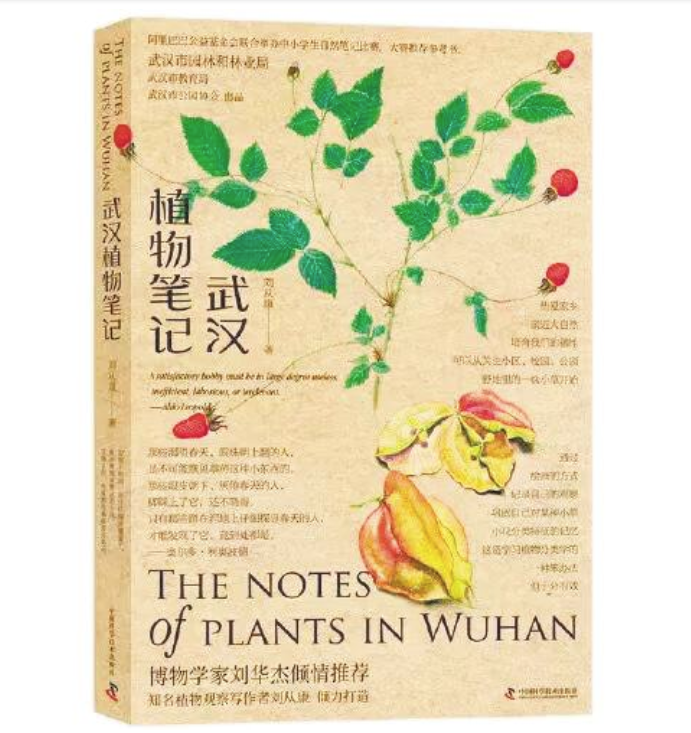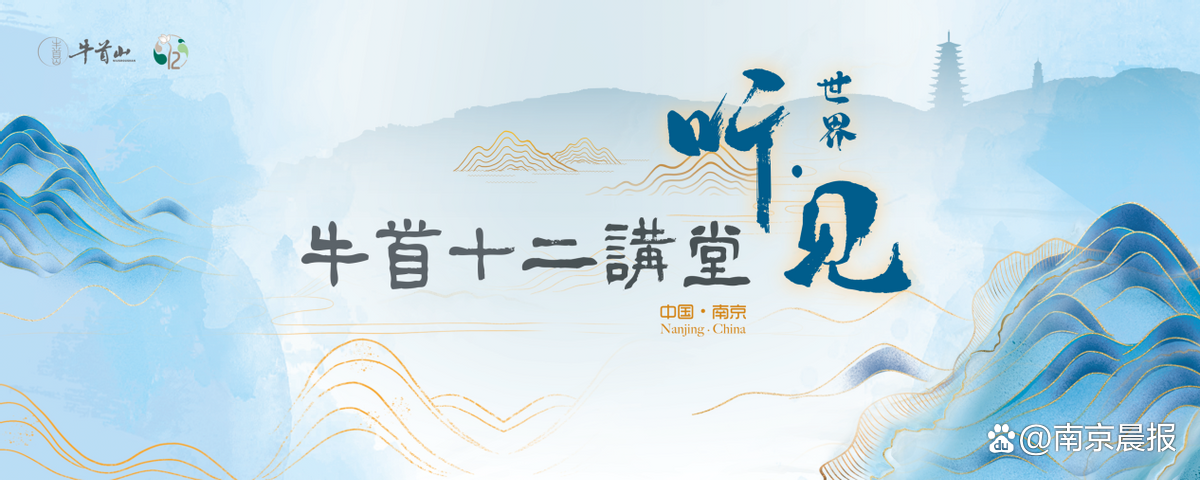Explore the plants and trees in the city to feel the beauty of poeticness -dialogue "Wuhan Plant Note" author Liu Congkang
Author:Hubei Daily Time:2022.09.23

Nong Xinyu, a reporter from Hubei Daily All Media
During the "Book Fragrant Wuhan · National Reading Month" event in the first half of this year, Wuhan popular science writer Liu Congkang was invited to enter the community many times to make public welfare lectures such as "Exploring the Plants in the Cities" and was welcomed by netizens.
Liu Congkang, deputy editor -in -chief of Wuhan Publishing House, science books "Wuhan Plant Note", "Birds around", "Twenty -Four Emeralds around you". He has won the title of "Top Ten Science Popular Science Volunteers in Wuhan City" and "Outstanding Popular Popular Person in Hubei Province".
Recently, a reporter from Hubei Daily interviewed Liu Congkang, listening to him about the grass and trees around him, feeling his love of nature and exploring nature.
Pictured and drawn, recorded the plants around Wuhan people
Reporter: After your "Wuhan Plant Notes" was published, the reader responded very much and won the second "China Natural Good Book Award". What do you think is the biggest feature of this book?
Liu Congkang: "Wuhan Plant Notes" is a plant notes about Wuhan flowers and plants, a record of plants around Wuhan people in the form of drawing and transcripts. In the book, following the clues of solar matter, more than 80 kinds of native plants in Wuhan's urban environment were introduced, and it was equipped with my own hand -drawn drawings.
The selected plants are common species, and they are representative for Wuhan's unique natural environment. In writing, I strive to help readers to grasp the characteristics of "one trick" in introducing the flowers, leaves, fruits, etc. of plants, and strive to open up a understanding of local plants and feel the nature around them for children and natural enthusiasts. The door.
If there is any special thing about this book, that is, I try to integrate traditional Chinese culture into plant research -not describing plants on plants, but combining the Book of Songs, Chu Ci "And the works of ancient and modern poets, discuss the characteristics, distribution and relationships of plants. I hope that in my pen, those humble flowers and plants can be closer to people's lives and closer to the brilliant classical literature in China.
Reporter: You once said that Wuhan is a city that is very suitable for observing animals and plants. Is this related to its geographical location?
Liu Congkang: Yes, Wuhan is located in central China and belongs to the subtropical monsoon humid climate zone. It has abundant rainfall, sufficient sunshine, and clear seasons. The airflow from the tropical ocean and the polar continent has confronted and merged here. Among the plants in Wuhan, there are all kinds of evergreen broad -leaved trees such as camphor and winter green, as well as gorgeous deciduous trees such as ginkgo and 桕 桕. The countryside, parks, streets, and lanes are also rich and interesting wild plants such as yellow Jing, white sandalwood, Luoyu, rackets, amaranth, pimple, pimple, and mountainberries.
Thirty years ago, I came to Wuhan, Jiangcheng from the ancient capital of Xi'an. Many lakes and wetlands, rich animals and plants, made me fall in love with this city. To put it bluntly in Wuhan's native local plants, I first pushed Wuchang Snake Mountain. There are not only Yellow Crane Tower on the Snake Mountain, but also many native local plants chanting in the Book of Songs. The most characteristic of which is the lane on both sides of the ridge trail. It is a big tree of five or six meters high. Mao Jing is also known as "Chu" in the Book of Songs, and "Book of Songs · Wang Feng · Yang Zhi Shui" says "Yang Zhi water, not flowing into Chu". Hubei is known as "Jingchu", which is derived from this plant.
The plants in the Book of Songs, Wuhan can find more than 110 kinds
Reporter: Indeed, Wuhan is a beautiful city. Which plant impression in Wuhan gives you the deepest?
Liu Congkang: The book "Wuhan Plants" introduced more than 80 kinds of plants, but Wuhan's plants were more than that.
I often say that there are many things that people have not noticed in the city. Behind the humble grass and trees on the road may also contain a lot of knowledge. For example, after the beginning of the spring, the strands that can be seen in many parts of Wuhan, open a small white flower, only six or sevenmm diameter, embellishment in the green branches and leaves, like stars. To see it clearly, you have to lean down -actually not enough, it is best to squat down, or even lying on the ground; there is also "a small rain, two sunny days" that can be covered with the grass in the green land. This is a kind of small herbal plant that is born in a year. At about October each year, the seeds are sprouting. After a long autumn and winter, they grow and bloom in spring; Amaranth, amaranth, also known as land vegetables, "March 3, cooking land" is the custom of spring in many areas in the south; there are also several kinds of wild peas that can often be seen in Wuhan. Wild peas, four -seed wild peas, small nest vegetables and wide cloth wild peas. On the river beach in the mouth of the Hanjiang River, every April, a large number of Guangbuye peas bloom, warm and gorgeous ...
Reporter: You once said that in the "Book of Songs", Wuhan can find more than 110 types. You should have done a lot of research and field surveys in this regard, right?
Liu Congkang: The Book of Songs is one of the sources of Chinese civilization. The grass and trees chanting in the Book of Songs still grow up silently to this day. These grass and trees are the best bridges that communicate with history today and your ancestors and their ancestors.
How many plants appeared in the Book of Songs? In this regard, different scholars have some different opinions, but after my research, I think there are only more than 130 kinds. To this end, I have published an article in the "Chinese Critics" published by the Commercial Press- "Book of Songs" in 305 articles. There are about 150 "special names" of plant. For example, Du Li is called "Du", also known as "Gan Tang" in the Book of Songs; Bai Mao's inflorescence is also called "荑"; There are more than a dozen "names" in the Book of Songs. Therefore, in general, the number of "names" exceeds "things". There are more than 150 "names" in the Book of Songs, and there are not so many corresponding plants. There are about 110 plants in the Book of Songs that can be found in Wuhan. For example, in the "Book of Songs · Tang Feng · Ge Sheng", "Ge Sheng Meng Chu, the vines are in the wild." Ge is a common wild plant in the mountains and forests in the suburbs of Wuhan. It can also be seen on the streets of Chuhe Han and other places; One; also like the stinky tree, it is called "樗" in the Book of Songs. The hibiscus flower often seen in the park is called "Shun" in the Book of Songs, which is used to describe beauty, such as "Yan Rushun Hua"; One of the "fú yǐ" is said.
Between people and the beauty of nature, there is only a distance between bowing and looking up
Reporter: How did you observe the plant with plants? How did you persist again?
Liu Congkang: I grew up in Shaanxi and traced back to my childhood. In the 1970s when the material was not abundant, each household had experience in picking Huaihuai and elm. Perhaps the nostalgia for nature may be sprouted at that time. Thirty years ago, I came to Han to study, and I settled in Wuhan after graduating from Paramgrars of China University of Geosciences. It became my second hometown. Wuhan is located in the central part, and many North -South species can grow here, and the plants that can be observed are rich. So with a love of love, I started the process of investigating the four seasons of plants.
I am not a professional botanist. Like the ordinary urban office workers, daily schedules are nine to five, most of the time they are busy shuttle between high -rise buildings and crowds. Therefore, community gardens and urban streets are the "home" of my plant observation. Occasionally, you will go to the park and the wilderness. On the way to and from get off work, on the way to school and school, I will observe and record the wild animals and plants around me during walking. Now, I have observed more than 300 wild birds in Wuhan and more than 1,200 wild plants.
Reporter: Why do you insist on using hand -drawn methods to record plants?
Liu Congkang: Although digital photography is very popular today and photography technology is strong enough, I still insist that observation and painting is the best way to understand plants. The plants in a natural state will show a unique form at a specific place and time. For example, the most common bowls downstairs in my house, the young leaves are developed by the sky as a unit. Looking at the anatomy of scientific research materials is much more interesting.
Reporter: Over the years, you have also been committed to leading more adolescents into nature and understanding nature. What is the biggest feeling in the meantime?
Liu Congkang: In recent years, I have been a plant instructor of Wuhan's "Park Classroom". This is a natural education public welfare project in Wuhan. By organizing a large number of activities, it leads children to go outdoors, observe naturally, do natural notes, and take natural notes. The children's observation results are assembled into a book. At present, there are many works such as "A Book of Bud" and "A Book of Blossoms", which are very popular with students and parents. In addition, I often walk into the campus and communities of colleges and middle schools, and to do some popular science public welfare lectures, which are very popular.
I think that sometimes, between people and the beauty of nature, there is only a distance between bowing and looking up. Human beings are the product of nature. No matter how "the house" you are, it looks naturally isolated from, but the secrets of healing in the heart are actually hidden in nature. Knowing nature and entering nature is not only the most "healing" way of a person, but also has great benefits to the development of a person's personality. When you understand the world's big, he knows the smallness of human beings. When facing nature, other species, and even other people, he will be less arrogant and arrogant. There will be no emotions for things you don't know, and you will not cherish and protect things without feelings. Therefore, knowing the natural environment of our own life is the basis for protecting the natural environment of our own survival.
The Hubei Daily client, paying attention to the major events of Hubei and the world, not only pushing the authoritative policies for users, fresh hot information, and practical convenience information, but also launched a series of features such as reading newspapers, newspapers, learning, online interactives.
- END -
"Cloud" meets!Upcoming!Waiting for you ...

Source: Shanxi DailyGraphic production: Shanxi Radio and Television Finance MediaW...
The exciting opening of the first twelve lectures of the Niu Twelve Lecture Hall brought a "cultural meal"

On the afternoon of August 28, the First Twelve Lecture Hall of the Niu gave a lec...